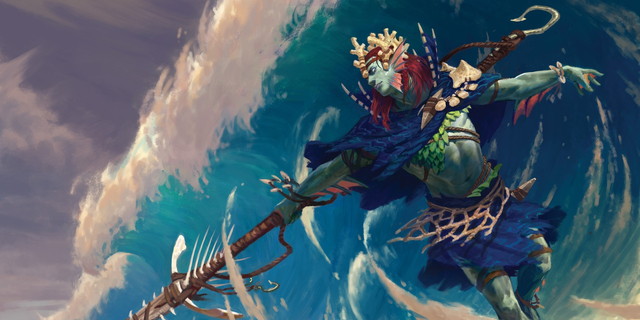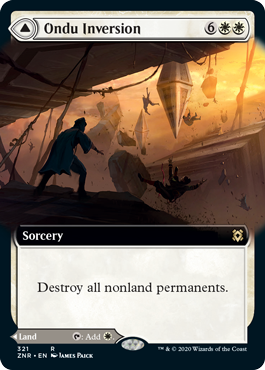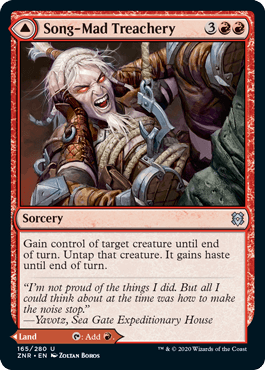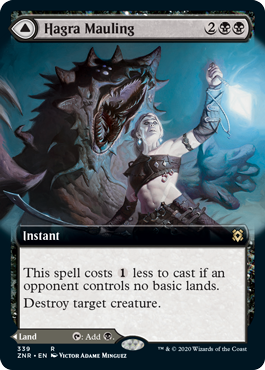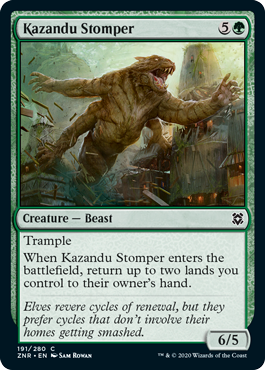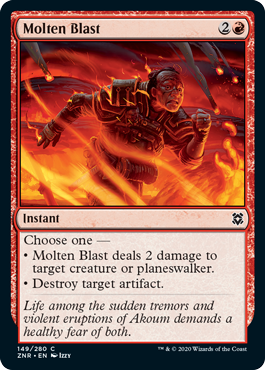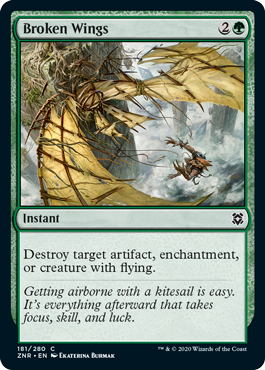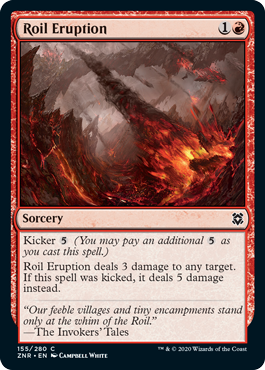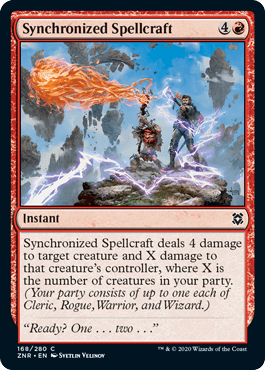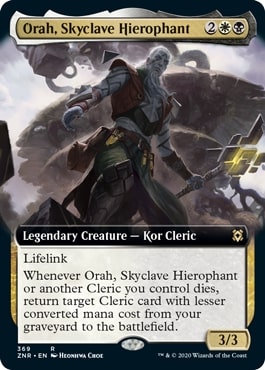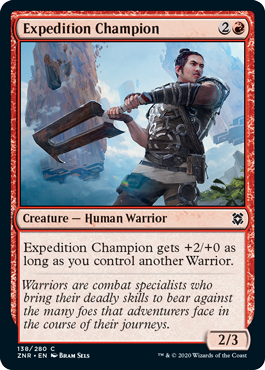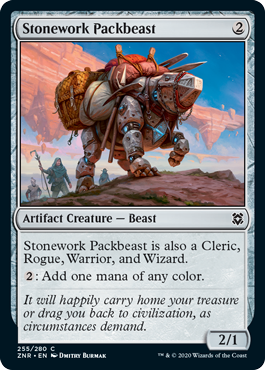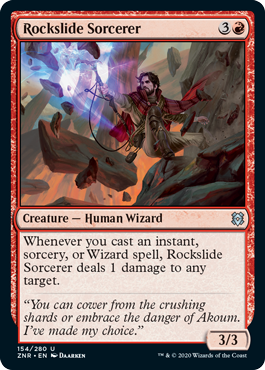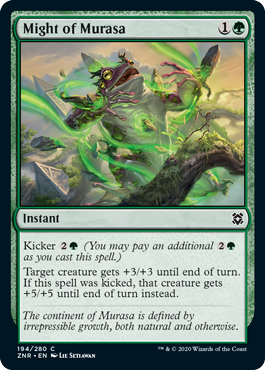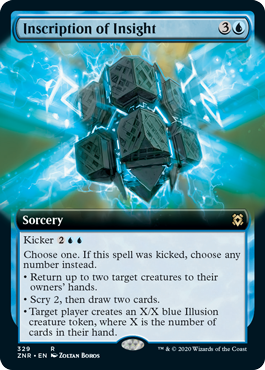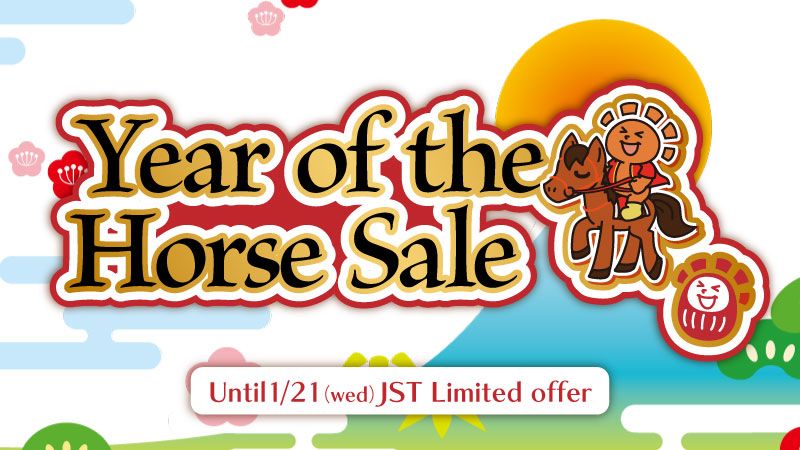Introduction
Hello Reader!
While I usually like playing Limited quite a lot, I have to confess that M21 didn’t really interest me at all, so I ended up playing mostly Constructed during the summer months. But now that Zendikar Rising is finally out, I have been playing almost exclusively Limited and I feel like the new format is a very good one – although it’s possible that it feels so for the same reason that food always tastes best when you’re hungry.
Also, Limited seems particularly alluring if you compare it to current Standard, which probably won’t even be helped much by the ban on Uro. If you haven’t yet, I highly recommend trying out Zendikar Rising Limited.
In this article, I’m going to cover some of the unique mechanics and dynamics that define the format and separate it from others, how they should affect your card evaluations and what to aim for when you’re drafting.
Spell Lands and Kicker
The most unique mechanic of Zendikar Rising are the Spell Lands: cards like 《Ondu Inversion》 and 《Shatterskull Smashing》. I believe the official name for them is modal double-faced cards or something along those lines, but personally I feel like Spell Land rolls off the tongue much easier. These are some of the best designed cards ever for Limited, and they are the most important reason why I like this format so much.
- 7/6/2020
- How to Beat Bad Luck
- Matti Kuisma
In an article I wrote earlier this year, I already explained in depth what makes these cards so good. I even talked about Land // Spell split cards without knowing that those would be printed so soon!
I have always thought that the biggest problem with Limited in general is that mana bases are too unstable and that too many games are decided by mana screw or flood. The Spell Lands go a long way towards fixing both of those. The most common mana base in Limited has traditionally been 17 lands, 9 of which are one basic land type and 8 of which are another. Those numbers are simply a bit too low for decks to be consistent. With the inclusion of Spell Lands, you can pump up the number of sources of each color to something like 10 of each, while also being more resistant to flooding because you’re running a lower number of basic lands that don’t do anything in the late game.
The format also has another great mechanic for this purpose: Kicker. I absolutely love cards like 《Tazeem Roilmage》, which are fine plays on turn 2 and some of your best draws on turn 12. The combination of these two mechanics means that decks are more resilient to both mana screw and mana flood than in probably any other Limited format I’ve ever played, making it very enjoyable to play. To borrow terms from the aforementioned article, ZNR Limited decks have a wider Zone of Optimal Performance than ever before.
In my experience, the optimal number of Spell Lands to have in a deck is somewhere around six, with 14-15 basic lands. I would certainly play more than that if I happened to get an unusually high number of the best ones, but I think that happens very rarely.
Most of the time I have ended up playing 15 or 16 basic lands, but even if I had a lot of Spell Lands I would almost never feel comfortable going below 14. Curving out is very important in this format and the aggressive decks will definitely punish you if all of your lands enter the battlefield tapped or cost 3 life to play untapped. On the other end, most Spell Lands have a bit weaker rate as spells, or are more situational than regular ones, so if you play too many of them you will start losing to your deck not being powerful enough.
Ideally you want Spell Lands where the spell side is good in the late game, as the land side is going to be good in the early game. In my experience, cards like 《Zof Consumption》 and 《Song-Mad Treachery》 go later than they should in drafts, which is understandable. The spell sides are overcosted cards that you wouldn’t ever really want to put in your deck without the option to play them as lands. However, in practice they work out very well because one of the sides is almost always going to be good.
Conversely, I rate cards like 《Jwari Disruption》 and 《Skyclave Cleric》 a bit lower than many others seem to do. Don’t get me wrong, I will still happily play them as they fix your spells-to-lands ratio early in the game, but it’s a lot better to have one side that’s good early and one side that’s good late, than two sides that are good early and bad late. These two specifically I count almost strictly as lands that just sometimes have a nice upside of making your opening hands better. The reverse is true for something like 《Hagra Mauling》, which I simply count as a spell that has the upside of sometimes fixing your mana. Most Spell Lands fall somewhere in between.
I will also note that if you have Spell Lands that are powerful in the late game, the value of cards like 《Pyroclastic Hellion》 and 《Kazandu Stomper》 go up significantly. Being able to play the flip cards as lands in the early game and then pick them back up later for the spell effect is just incredible. At first I thought 《Hellion》 seemed like filler material, but now I’m actually happy to play one or two in most of my red decks.
There is one downside to the Spell Lands though, which is their effect on sideboarding. If you end up with say, six Spell Lands and 14 basic lands, it means you’re playing 26 cards that you either picked up in the draft or opened in your Sealed pool. That means you end up having less cards in your sideboard and the ones in there are probably of relatively low value. I don’t think I have ever used the sideboard as little as I have in this Limited format. This applies especially in Sealed, where I have had a couple of pools with which I sideboarded a maximum of one or two cards each round, and the one card I boarded in every time should’ve actually started in the main deck.
Most cards in the format are also generically good instead of matchup dependant, so I haven’t yet encountered a situation where I would, for example, want to switch to a different color to have cards that are better suited towards dealing with my opponent’s threats. This was something that I did a lot more in formats like Ikoria and Theros Beyond Death. However, if I end up drafting Red or Green, I do still prioritize picking up a 《Molten Blast》 or a 《Broken Wings》 for the sideboard to deal with cards like 《Relic Vial》 or 《Relic Amulet》.
Attacking vs. Blocking
Another mechanic we have in the set is a returning one from the original Zendikar: Landfall. Whereas I absolutely love the Spell Lands, I have to say that creatures getting +X/+X from Landfall is one of my least favorite mechanics ever.
When there are a lot of cards like 《Canopy Baloth》 that are very good at attacking but not very good at blocking, the games tend to be more about racing and less about interaction. Landfall also makes missing land drops even more punishing than it usually is, although that is mitigated by the decks having an above average number of lands in this format.
The landfall creatures aren’t the only culprits for this, there are also cards like 《Grotag Bug-Catcher》 that are fantastic offensively but completely useless on the defensive end. Thanks to trample it combos particularly well with combat tricks like 《Inordinate Rage》. If you try blocking it and they have a pump spell, you often end up taking something like 4 trample damage in the process. Cards like 《Angelheart Protector》, 《Kabira Outrider》, 《Dreadwurm》, 《Territorial Scythecat》, 《Subtle Strike》, 《Feed the Swarm》, 《Sizzling Barrage》 and so on are all much better when you’re attacking.
By now I think it’s widely known that blue is the strongest color in the format, but I don’t think red is far behind. The aggressive red decks just tend to play out very well, and they also have access to a lot of reach in the form of 《Roil Eruption》, 《Synchronized Spellcraft》, 《Malakir Blood-Priest》, 《Pyroclastic Hellion》 et cetera, which makes it even harder and riskier to try to hold back and play the long game.
Black-White decks with 《Malakir Blood-Priest》s and 《Marauding Blight-Priest》s are also good at curving out and then draining the rest of your life total once the board gets clogged.
Quality vs. Quantity
Speaking of Landfall, Spell Lands and Kicker, I want to note that the quantity of cards is usually more important than their quality in this format.
This makes discard effects like 《Mind Drain》 better than they would be in other formats. In some other environments, discarding an extra land is not much of a cost, but here it actually is. You tend to have less blanks in your hand in the first place thanks to the Spell Lands, the lands have more direct utility in the form of triggering landfall, and having a bunch of mana lets you cast all of your kicker cards for their kicker cost. 《Mind Drain》 in particular is actually quite synergistic in this format as it also works well with Rogue cards like 《Nimana Skitter-Sneak》 and Cleric cards like 《Marauding Blight-Priest》.
The opposite is true for cards that have Scry. The most common use for scrying is either shipping extra lands to the bottom or digging your way out of a mana screw, both of which are less necessary in this format than in most others. Most of the good cards are also fairly close to each other in power level even in the late game, and I have often actually wanted to draw my 2-drops on turn 10 because some of them have great abilities like 《Tazeem Roilmage》. Most of the bombs in this format are also very beatable so you rarely want to dig towards a specific card that wins the game on its own. As a contrast, if I had a 《Dream Trawler》 or a 《Kiora Bests the Sea God》 in my Theros Beyond Death deck, I wanted to scry aggressively to find them.
Tribal vs. Party
Next up we get to the last major theme in Zendikar Rising: Tribal and Party synergies. There are four different major Tribes in this set, Clerics, Rogues, Warriors and Wizards, which together form to combine Party synergies for cards like 《Practiced Tactics》.
The best of the best decks in this format are probably the Tribal decks when they come together, because with the correct synergies and payoffs they have an extremely high ceiling. That said, I actually think that they are overrated and I rarely find myself drafting one.
The problem with them is that you need a critical mass of the synergistic cards, of which there aren’t actually too many going around. And if you try to go for a Warrior deck but don’t quite end up with enough actual Warriors, your 《Expedition Champion》s and 《Goma Fada Vanguard》s stop having a text box. While the rewards are high, the risks are as well. In order to get a great tribal deck, you have to get very lucky in the Draft, and probably even more lucky in Sealed.
Also, if half of your creatures are of the same type, your Party cards start sucking as well. It becomes hard to make your 《Emeria Captain》s and 《Grotag Bug-Catcher》s more than anemic 2/2s.
For that reason, I think it’s much easier and safer to just go for the various Party synergies to begin with, and not worry about the linear Tribal cards too much unless there is a tribe that’s clearly open. It is fairly common to have a sub-theme of a tribe and just focus on the payoffs that are mostly good by themselves or don’t require much enabling, but trying to get a Tribal-only deck is unlikely to work out.
A good example of a tribal card that I like is 《Expedition Diviner》, which is a perfectly playable card on its own and then sometimes gets a nice bonus ability on top. Another one that I like is 《Ardent Electromancer》, which is an important piece of Red aggro decks. Going 2-drop into 《Ardent Electromancer》 and another 2-drop is a recipe for success.
If you have a somewhat even spread of the Party types, getting two separate ones in play at the same time is rather easy, and most of the cards are already good at that point. If 《Grotag Bug-Catcher》 attacks as a 3/2, or an 《Emeria Captain》 comes into play as a 3/3, they’re already good cards. A reasonable amount of the time you have three different types and they become legitimately great cards, and every once in a while you hit the jackpot and get a ridiculous card when you have a full Party.
Just like in real life, I would rather work very little to get a decent payday, than work a lot to maybe sometimes get a little bit more.
It is also worth noting that creatures that don’t have a Party creature type at all have to be very efficient otherwise, because not having a relevant type makes your other cards worse. Conversely, 《Stonework Packbeast》 is an overperformer because it makes many of your other cards better, and for most color combinations there is a Party type that is quite hard to get naturally.
Power vs. Toughness
The last format defining feature that I want to mention is that it is full of creatures that have higher power than toughness. This leads to a few different things.
First, toughness based removal works better than usual, including -1/-1 and 1 damage effects like 《Subtle Strike》 and 《Rockslide Sorcerer》. 《Roil Eruption》 would be an incredible common in any other set as well, but here it’s actually able to kill even 4-drops on a regular basis, even without kicker!
On the other hand, 《Vanquish the Weak》 hasn’t been as good as I hoped it would be. Getting to kill a 《Shepherd of Heroes》 is nice, but more often than not it’s restricted to only 2- and 3-drops so you won’t get a tempo swing out of it. It is also very much a fake instant – trying to cast it on the opponent’s turn is often a recipe for disaster, because every color has a cheap card at common that can blow you out there.
High power and low toughness means that it’s easy for cheaper creatures to trade with more expensive ones. This makes something like a 《Skyclave Squid》 much more efficient than a card like 《Scorch Rider》, and means that it’s good to have a mostly low curve, as long as you can get some cheap creatures with useful abilities.
The most critical difference in toughness is the one between 3 and 4. Most of the 2- and 3-drops have 2 or 3 power, and 《Roil Eruption》 deals 3 damage, so having the fourth point of toughness helps a creature survive at a significantly higher rate. However, there are very few 4 mana creatures with 4 toughness, and those that exist aren’t particularly great otherwise.
Good creatures with 4 toughness or more only start appearing at 5 or more mana, and expensive cards are naturally weaker against hard removal and tempo plays like 《Cunning Geysermage》.
Conclusion
Overall, I have found Zendikar Rising Limited to be very enjoyable and the Spell Lands in particular give you a lot of interesting decisions. I am still not sure how high they should be rated, but I’m pretty sure that most players aren’t taking them highly enough.
To recap, I recommend drafting aggressive decks with a lot of Spell Lands, 2-drops with abilities like Kicker, toughness-based removal and Party synergies. And as you probably noticed, I really love 《Tazeem Roilmage》 and I probably used it too many times as an example of the things that work. You haven’t really lived until you have returned an 《Inscription of Insight》 back into your hand with it.
I hope this was a useful overview of the format and helps you get started. If you have any questions regarding ZNR Limited, feel free to tag me on Twitter!
Matti(Twitter)


